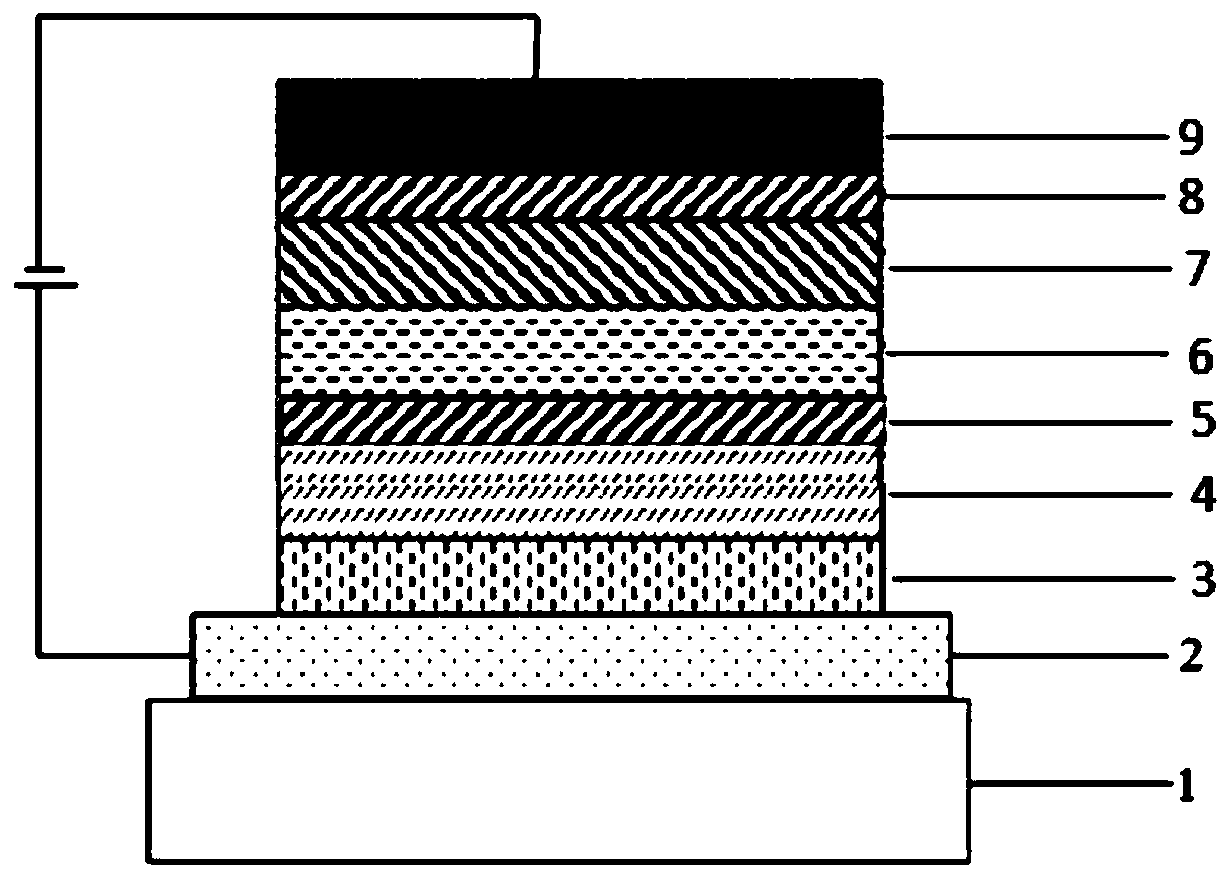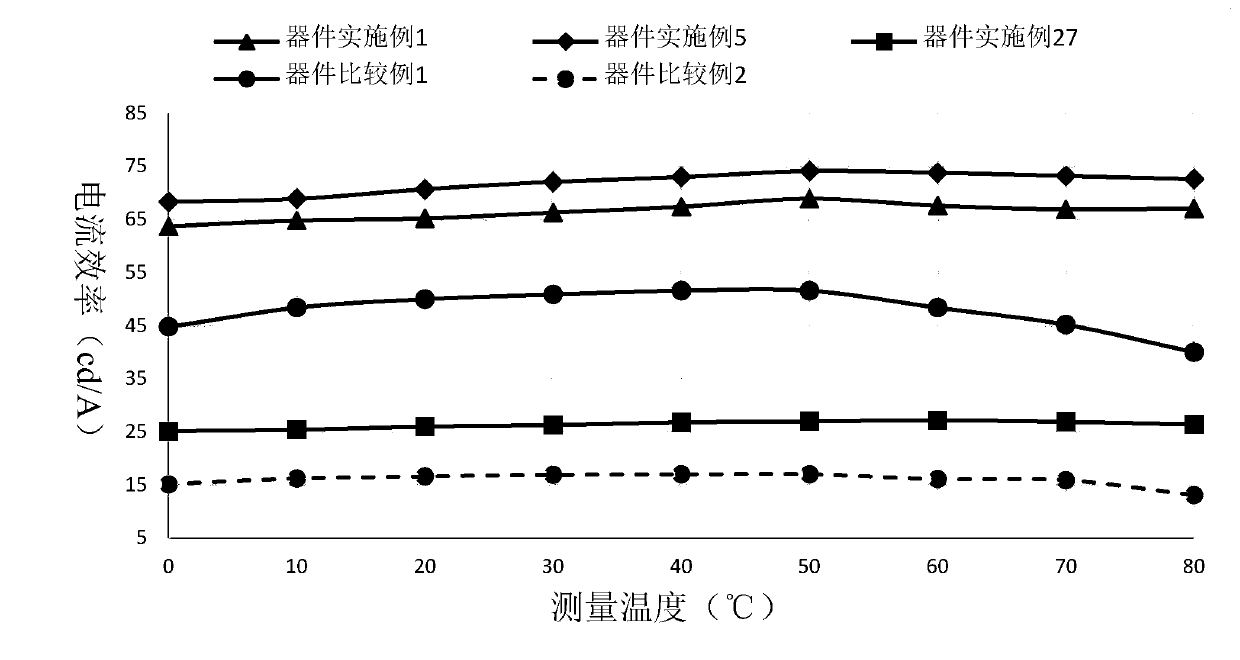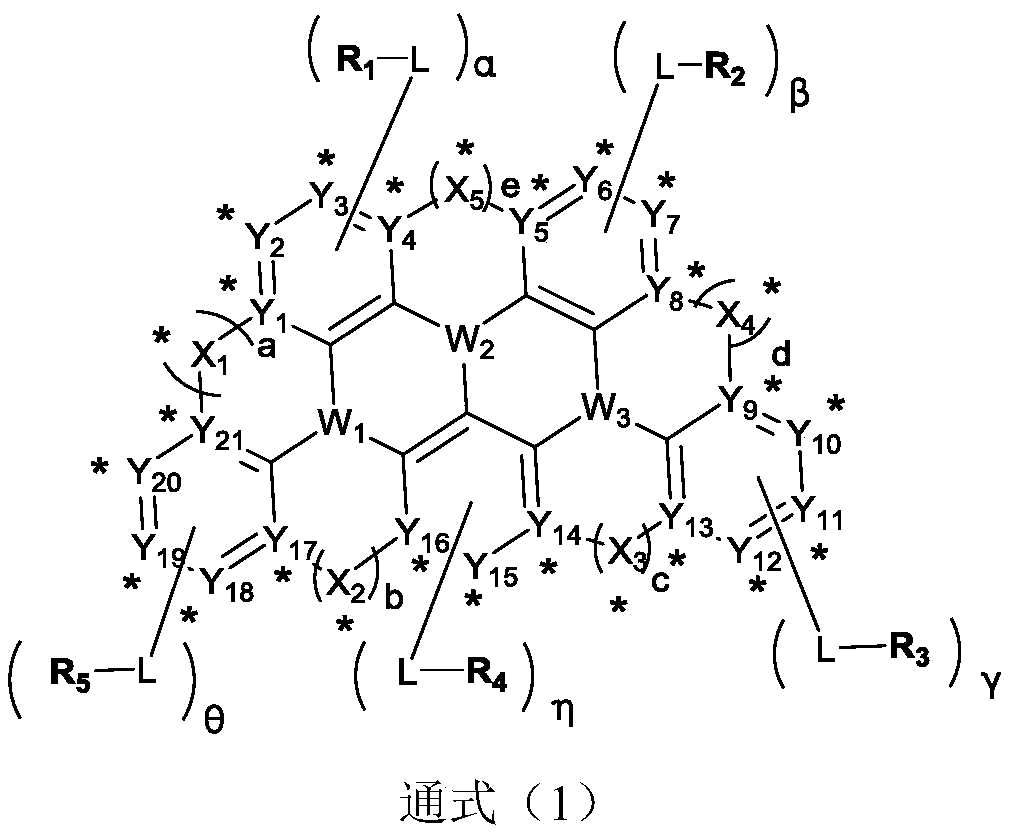Boron-containing compound and application thereof to organic light-emitting device
A boron compound, the technology of the compound, applied to the compound and its application in the organic electroluminescence device, can solve the problems of disparity and the like
- Summary
- Abstract
- Description
- Claims
- Application Information
AI Technical Summary
Problems solved by technology
Method used
Image
Examples
Embodiment 1
[0060] Embodiment 1: the synthesis of intermediate G:
[0061] Take the synthesis of intermediate G1 as an example:
[0062]
[0063] (1) In a 250mL three-necked flask, under a nitrogen atmosphere, add 0.01mol of raw material A-1, 0.015mol of raw material B-1, dissolve in a mixed solvent (90ml of toluene, 45ml of ethanol), and then add 0.03mol of Na 2 CO 3 aqueous solution (2M), stirred under nitrogen for 1 hour, then added 0.0001mol Pd(PPh 3 ) 4 , heating to reflux for 15 hours, sampling point plate, the reaction is complete. Naturally cooled, filtered, the filtrate was rotary evaporated, and passed through a silica gel column to obtain intermediate J-1 with a purity of 96.4% and a yield of 83.7%. Elemental analysis structure (molecular formula C 18 h 14 BBrClN): theoretical value C, 58.36; H, 3.81; B, 2.92; Br, 21.57; Cl, 9.57; N, 3.78; test value C, 58.35; ; N, 3.79. ESI-MS (m / z) (M+): The theoretical value is 369.01, and the measured value is 369.59.
[0064]...
Embodiment 2
[0069] Embodiment 2: the synthesis of compound H2:
[0070]
[0071] In a 250ml three-neck flask, under the protection of nitrogen, add 0.01mol intermediate G-1, 0.012mol raw material C1, 150ml toluene and stir to mix, then add 5×10 -5 molPd 2 (dba) 3 , 5×10 -5 mol P(t-Bu) 3 , 0.03mol sodium tert-butoxide, heated to 105°C, refluxed for 24 hours, sampling plate, showed no bromide remaining, the reaction was complete; naturally cooled to room temperature, filtered, the filtrate was rotary evaporated to no fraction, passed through a neutral silica gel column , the target product was obtained, the HPLC purity was 99.76%, and the yield was 76.1%. Elemental analysis structure (molecular formula C 52 h 34 B 2 N 4 ): theoretical value: C, 84.80; H, 4.65; B, 2.94; N, 7.61; test value C, 84.84; H, 4.63; B, 2.93; HPLC-MS: The molecular weight of the material is 736.30, and the measured molecular weight is 736.48.
Embodiment 3
[0072] Embodiment 3: the synthesis of compound H43:
[0073]
[0074] Dissolve 0.01 mol of intermediate G-2 and 0.012 mol of raw material C2 in 150 mL of toluene and ethanol (V toluene: V ethanol = 5: 1) mixed solution, add 0.0002 mol of Pd (PPh 3 ) 4 and 0.02mol Na 2 CO 3 , reacted at 110°C for 24 hours under an atmosphere of nitrogen gas, took a sample and spotted the plate, after the raw materials were completely reacted, cooled and filtered, the filtrate was rotary evaporated to remove the solvent, and the crude product was passed through a silica gel column to obtain compound H43; the elemental analysis structure ( Molecular formula C 51 h 37 B 2 N): theoretical value: C, 89.36; H, 5.44; B, 3.15; N, 2.04; test value C, 89.28; H, 3.18; B, 3.15; HPLC-MS: The molecular weight of the material is 685.31, and the measured molecular weight is 685.47.
PUM
| Property | Measurement | Unit |
|---|---|---|
| thickness | aaaaa | aaaaa |
Abstract
Description
Claims
Application Information
 Login to View More
Login to View More - R&D
- Intellectual Property
- Life Sciences
- Materials
- Tech Scout
- Unparalleled Data Quality
- Higher Quality Content
- 60% Fewer Hallucinations
Browse by: Latest US Patents, China's latest patents, Technical Efficacy Thesaurus, Application Domain, Technology Topic, Popular Technical Reports.
© 2025 PatSnap. All rights reserved.Legal|Privacy policy|Modern Slavery Act Transparency Statement|Sitemap|About US| Contact US: help@patsnap.com



